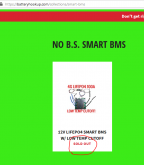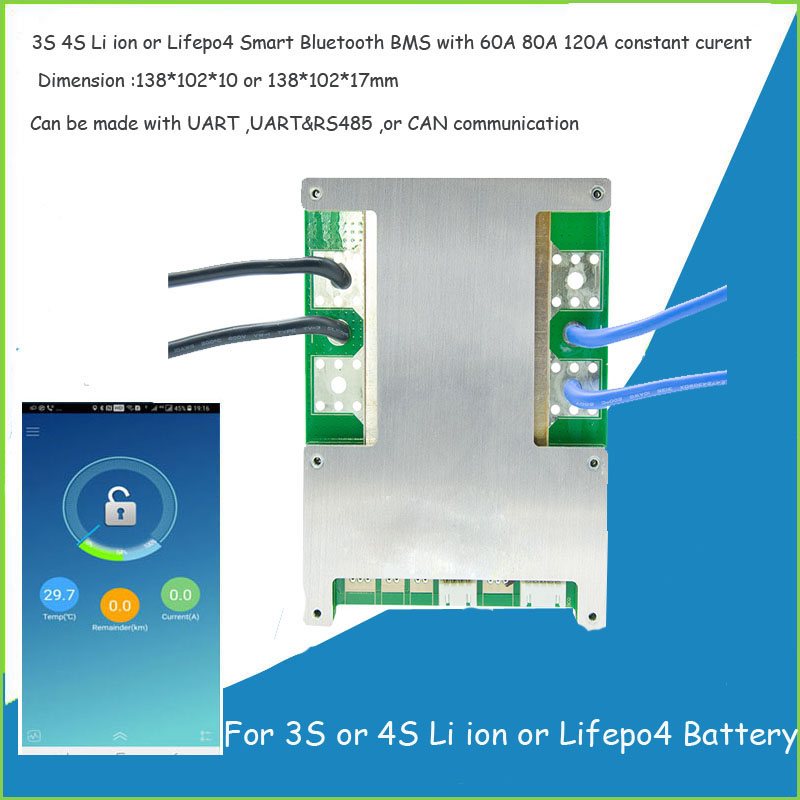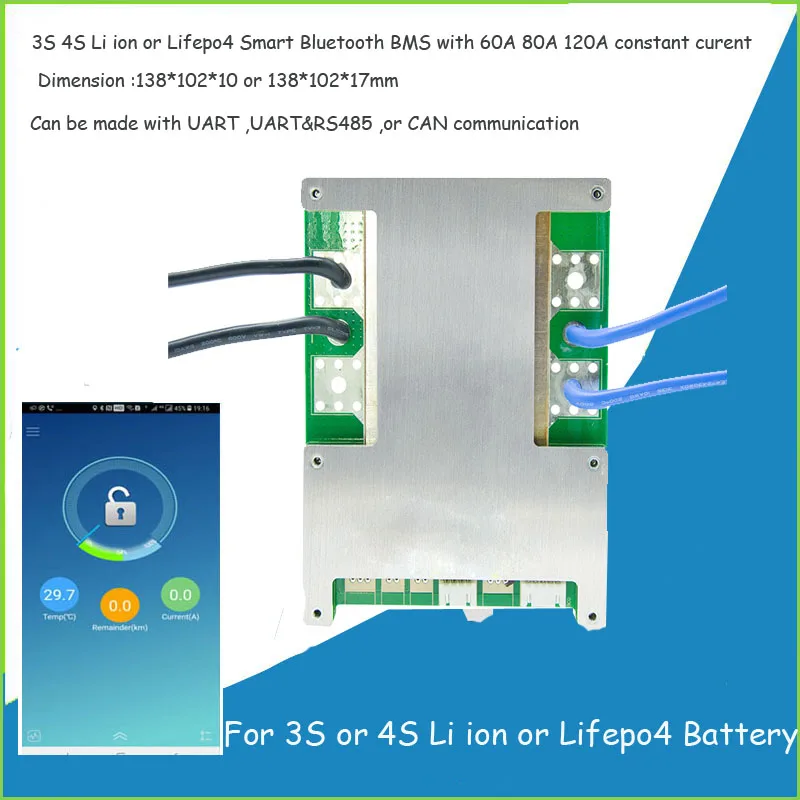Spent the last few days and tonight testing BMS:
1. The "new" daly LiFePO4 BMS (that states in the data sheet that it has low temp charging protection) does not have low temp charging protection. And yes, it has a temp sensor attached. This disappointed me big time. Video to come.
2. Next, I programmed/tested this BMS for a couple of days:
View attachment 4222
And it failed. App would crash. Default low temp cut off was -5 degrees C. No manual and very difficult to work with. Had a lot of issues with it. Will cover every downside in my upcoming video. Avoid this BMS.
3. Then I tested the battery hook up 100A BMS that arrived this afternoon:
View attachment 4223
And low temp cut off was programmable and worked perfectly. Bluetooth connected perfectly as well. I was excited so I did a load test of 200Wh with 90-102A continious. Passed with flying colors, then pushed it passed its limit and it disconnected the loads. Heatsink stayed warm and did not heat up excessively.
I'll make a long video covering all these things and the testing methods, but I am going to go with this bms from now on. I am so tired of other bms failing. The battery hookup one is used on medical devices as well, which I need more information on.
The number one most important thing to know when using this bms is that you need the proper app. The app on the website is NOT what you want. You need the "enterprise" version:
Click Here for APK of enterprise BMS program app
Send it to your phone with an email (not gmail), then install in on your phone, then connect to bms.
Then go to parameter settings and change the low temp charging cut off to 2 degrees Celsius. Then the reconnect voltage to 5 degrees Celsius.
You can buy this bms by
clicking here (my affiliate link) and the coupon code is "SOLAR" for 10% off. I am going to get a 8s model and build a big system with it. I like this bms a lot, so will be testing it like crazy. I also will make a DIY video on how to use it in the next couple days (possibly tomorrow if I get enough sleep tonight).
Biggest downside of this bms is 2x 10 gauge wires at P- and B-. But it has a hole and solder tabs for adding more wires.
Just wanted you guys to know about all this before you waste your money on the first 2 bms. I wasted $150 on those bms and they were a total rip off. The new bms seems to kick butt, so videos to come.







